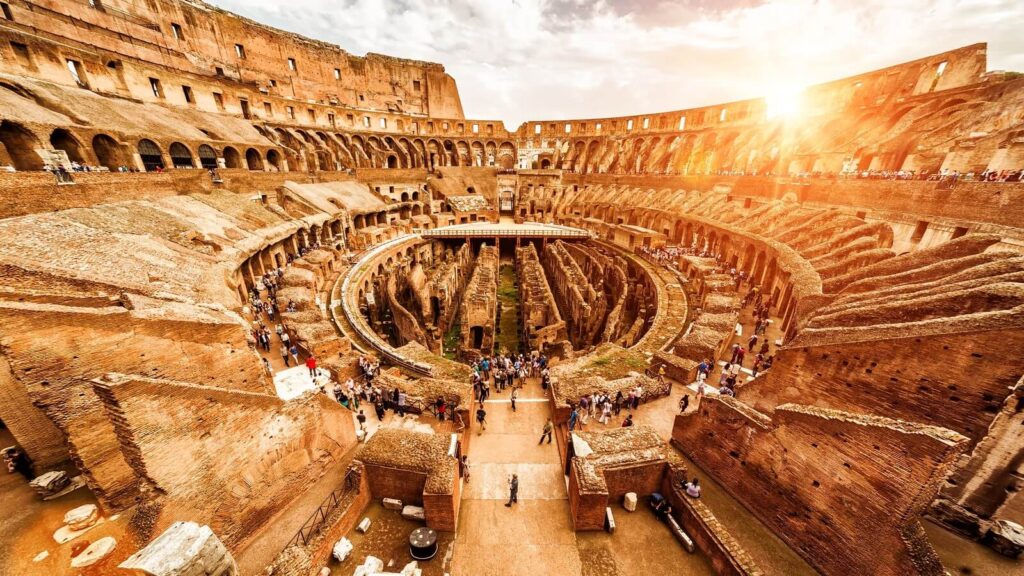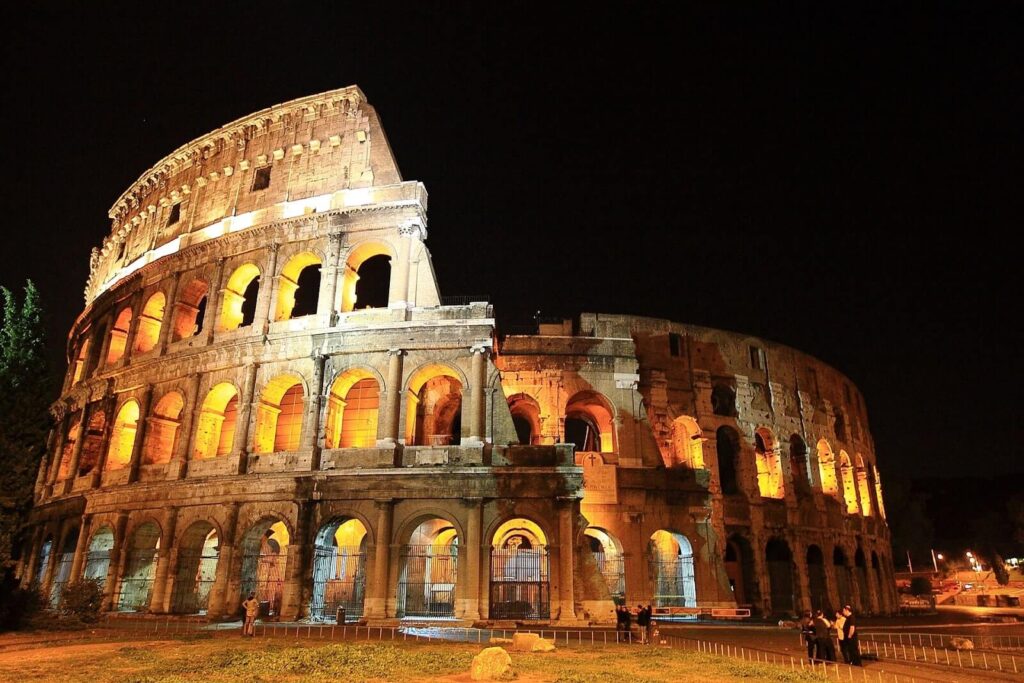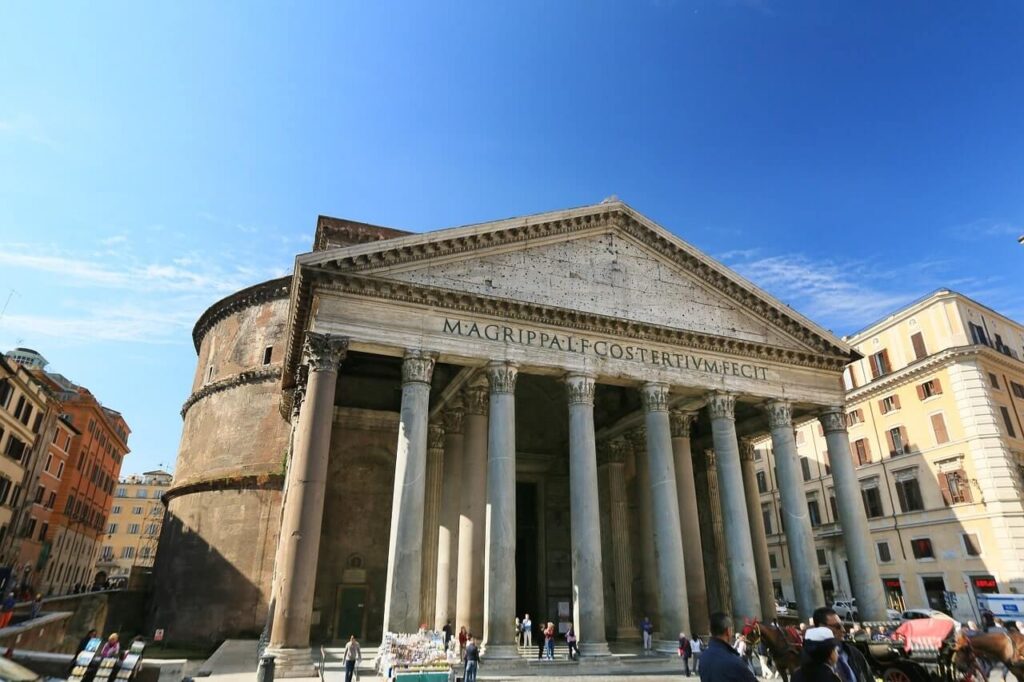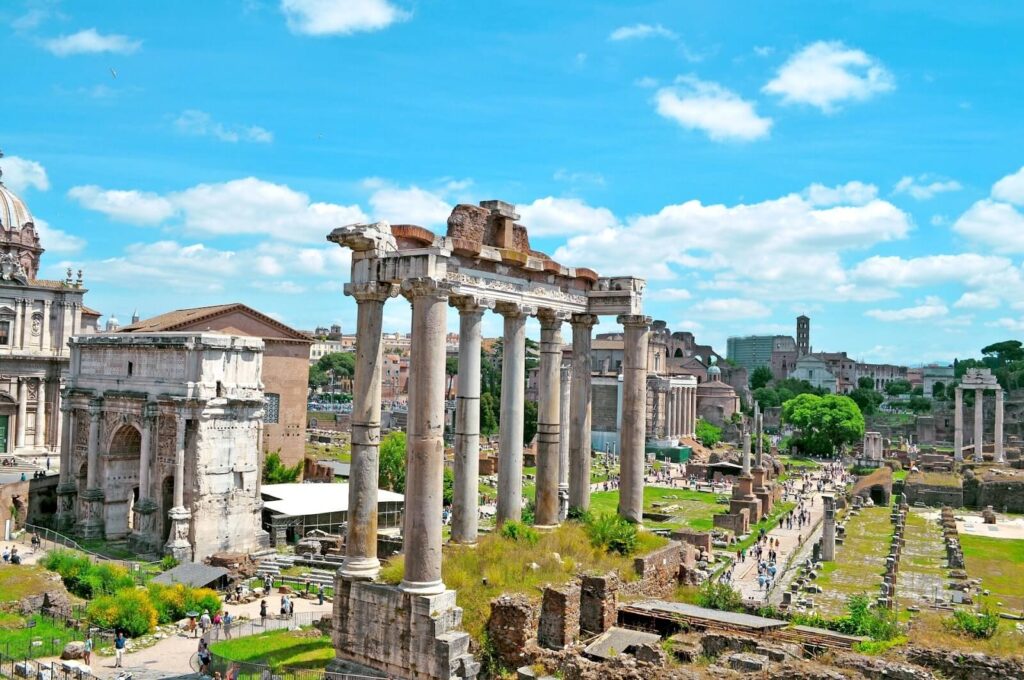Some visitors come to Rome for the stunning architecture of the Vatican Palace and Rome’s basilicas, some come for the beautiful art galleries and museums, and some come for its ancient history — to explore the sites and buildings of Ancient Rome. If you’re fascinated with Ancient Rome and you want to see and learn as much as possible about it during your next trip to Rome, then you’ve definitely come to the right place. Gray Line Rome has an extensive range of Rome Tours and we’d like to offer a brief guide to its three most important historical sites for anyone who’s planning their next visit: the Colosseum, the Pantheon, and the Forum.
The Colosseum

The Colosseum is probably right at the top of most visitors’ to-do list. This ancient structure dates back to 80 AD. Despite its huge size and impressive design, it only took 10 years to build. This structure was built by Emperor Vespasian for his successor, Titus. Everyone knows that the Colosseum was built for gladiatorial combat, but it was also the site of chariot races and a range of other spectacles. When it was first built, the Colosseum could hold approximately 50,000 spectators, all of which were granted free access to the gladiatorial games and other events.
The Colosseum is still a huge, imposing structure in modern Rome, but much of its past splendour has been worn away over the last two millennia. However, when you consider that most ancient Roman structures have been completely destroyed, the Colosseum is actually remarkably well preserved.
If you visit the Colosseum, you will get the chance to walk through the different parts of the structure and you may be able to imagine what it was like in ancient times, filled with its raucous crowds and fierce gladiators, as well as lions, bears, and other deadly animals. It might be a little more difficult to imagine how the Colosseum might have looked when they flooded it to carry out naval battles for the crowd’s amusement!

If you’d like to learn and experience as much as possible about the Colosseum, you should consider our range of Colosseum tours. If you’re looking for a particularly special Colosseum experience, you may like to try Gray Line Rome’s Colosseum-by-Night tour
The Pantheon

Whilst the Colosseum is pretty well preserved for a building made over 2000 years ago, it has nothing on the Pantheon! The Pantheon is famous for its incredible dome and it is, without a doubt, the best preserved Ancient Roman structure. The Pantheon was made in 125 AD and is 45 years younger than the Colosseum, but you’d be forgiven for thinking it was 1,500 years younger.

The Ancient Romans where remarkably good at recording their history as it happened, but this practice broke down a little as the empire was dismantled. It’s a total mystery why the Pantheon survived all of the attacks and raids by Rome’s enemies over the years. Almost every other important Roman ruin was damaged significantly, but the Pantheon remained intact. Part of this is due to the material the Romans used as it is very similar to modern-day concrete — which was many centuries ahead of all other civilizations’ architectural technology. The Catholic Church is also responsible for the Pantheon’s preservation, as the building became a church in 609 AD and has therefore been looked after by one of the richest organisations in the World ever since.
The Roman Forum

The Roman forum is a complex assortment of ruins that made up Ancient Rome’s cultural hub. The current ruins were once the city’s centre for commerce, food, culture, etc. It was where its government convened and where laws were passed. It was also where elections were campaigned and where public debates took place. Ancient Rome was a city that thrived on discourse and the Forum was where everyone met up to discuss the city, the Roman empire, and the wider world beyond that. Whilst there are only ruins where the Forum’s buildings once stood, they still tell an important story and tours can help convey to visitors what the Forum would have been like at the time.
You can take our combination tour of the Colosseum, the Forum, and Palatine Hill if you’d like a comprehensive tour by a professional guide. Our guide can tell you things you won’t find in handbooks and show you the spot in the Forum where Julius Caesar was assassinated by Brutus and the other conspirators. This tour is the perfect option for history buffs looking for the quintessential Ancient Rome experience.
There’s so much more of Ancient Rome we haven’t covered, such as the Baths of Diocletian, Trajan’s Market, and Piazza Navona, but Rome has too many important historical sites to cover in one guide. We hope this guide as inspired a few readers to finally start organising that Roman trip they’ve been fantasising about for years. And if you have any questions about any of the tours mentioned in this guide, please don’t hesitate to get in touch. Unlock the secrets and stories of Ancient Rome with Gray Line Rome!